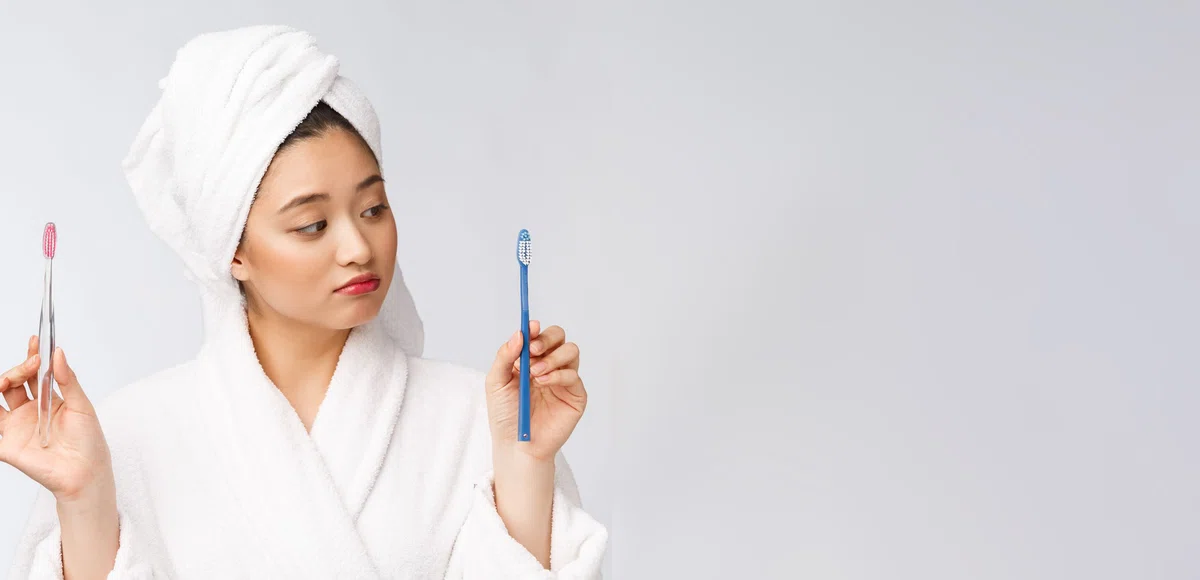
The importance of regularly changing hygiene products: toothbrush, comb and more
Find out why it's important to change your toothbrush, comb and other hygiene products regularly. Maintain optimal cleanliness and health!
Contents
- Frequency of replacement
- Replacing your toothbrush: why it's important and how often you should replace it
- Comb
- Washcloth
- Dishwashing sponges
- Cosmetic sponges
- Bedding
- Blankets and pillows
- Mattress
- Bath towels
- Frequently Asked Questions
- 🔹 How often should I replace my toothbrush?
- 🔹 Why is it important to renew my toothbrush regularly?
- 🔹 How often is it recommended to change my hairbrush?
Proper oral hygiene and appearance play an important role in maintaining our overall health. However, in addition to proper brushing techniques for teeth and hair, it is also important to pay attention to the most basic tools used in our daily hygiene - toothbrushes and combs. But how often should these hygiene tools be changed to maintain optimal levels of cleanliness and effectiveness? In this article, we'll look at expert advice on when to replace toothbrushes, combs and other important hygiene tools, and why it's important for our overall wellbeing.
Frequency of replacement
Toothbrush replacement: why it's important and how often you should replace your toothbrush
A toothbrush is an important tool for maintaining oral health. Dentists recommend renewing it once every 3 months, at least. Why is this frequent brush replacement so important? First, over time, the bristles begin to lose their effectiveness due to natural wear and softening. This means that it won't be able to effectively remove plaque and clean your teeth. Second, bacteria and microorganisms from the oral cavity accumulate on the surface of the toothbrush. This can lead to an increased risk of infection or the development of gum disease. Third, over time, the shape and structure of the lint on the brush can change, which can lead to gum trauma or damage to tooth enamel.
It is interesting to note that if you prefer toothbrushes with a natural wooden handle, you will have to replace them more often - about every month. This is due to the fact that wooden materials are more susceptible to wear and tear and are prone to bacteria buildup.The replacement intervals for other hygiene items are listed below.
Comb
It is recommended that you replace your comb once a year, especially if it is made of wood with natural bristles or has false teeth. However, plastic combs such as the Tangle Teezer have an almost unlimited lifespan. It's important to remember that regardless of the type of comb, washing it regularly with soapy water once a week is essential to maintain hygiene.
Washcloth
It is recommended to change your loofah every six months, whether it is made of synthetic or natural material. This is because loofahs can accumulate bacteria over time, and changing them regularly will help maintain optimal hygiene conditions.
Dishwashing sponges
The more often you change your sponges, the better. Due to the porous structure of sponges, millions of bacteria can accumulate on their surface. It is recommended to change your dishwashing sponges every 2-4 weeks or when they show signs of wear and contamination.
Cosmetic sponges
It is recommended to change your cosmetic sponges once a week. Sponges are used to apply makeup to the skin and their surface can be an ideal breeding ground for bacteria. To maintain hygiene, it is also advisable to dry the sponges after each use and to disinfect them periodically, e.g. by rinsing them with hot soapy water or using special products for cleaning cosmetic instruments.
Bedding
Regular change of bed linen is important to maintain cleanliness and hygiene. It is recommended to change bed linens, including pillowcases, once a week during the warm season and twice a month during the cold season. Bedding can accumulate dead skin cells, sweat and other bodily fluids, providing a favorable breeding ground for bacteria and dust mites. Washing bedding at a temperature of at least 50 degrees also helps to effectively kill bacteria and mites.
Blankets and pillows
It is optimal to replace blankets every 10 years and pillows every 4 years. The service life depends on the composition and filling. Blankets made of natural materials such as down or wool may attract more harmful bacteria and dust mites, which can cause allergic reactions. Synthetic materials may be less fastidious in this regard. In any case, it is recommended that blankets and pillows be cleaned and ventilated periodically, and that mattress pads and covers be used to keep them clean and protected.
Mattress
It is recommended to replace your mattress about every 6-7 years. However, if you use mattress covers that protect the mattress from dust, stains and bacteria from the very beginning of its use, the life of the mattress can be extended. Regular airing and cleaning of the mattress are also important measures to keep it hygienic.
Bath towels
The frequency of changing towels depends on their purpose. It is recommended to change face towels every other day, for intimate hygiene - after each use, for feet - every 2-3 days depending on the intensity of use and season (more often in summer, less often in winter), for hands - every 2-3 days, and for body - also every 2-3 days. Regular towel changes help prevent bacteria buildup and keep your towels clean after a bath or shower.
Apart from the items listed above, it is also important to pay attention to the hygiene of other everyday items. For example, cell phones, keyboards, remote controls and other electronic devices can be sources of bacteria. It is recommended to periodically wipe them with wipes soaked in an antiseptic solution or use special antimicrobial covers or films that protect against bacteria and dirt. It is also important to remember to regularly clean and disinfect personal hygiene items such as razors, nail files and other tools to prevent bacterial growth and possible infections.
All of these measures will help keep everyday items clean and hygienic, preventing bacteria buildup and reducing the risk of various infections and illnesses. It is important to remember that recommendations for frequency of replacement may vary slightly depending on individual needs, conditions of use and manufacturer's recommendations.
Frequently Asked Questions
🔹 How often should I change my toothbrush?
Dentists recommend changing your toothbrush every 3 months to keep your teeth cleaning effectively and prevent bacteria buildup. 🪥
🔹 Why is it so important to update your toothbrush regularly?
Replacing your toothbrush regularly is important for several reasons. First, over time, the bristles of the brush become softened and unable to effectively clean your teeth. Second, bacteria builds up on the surface of the brush, which can lead to the risk of infections. Third, wear and tear on the brush lint can cause damage to gums and tooth enamel. 🦷
🔹 How often is it recommended to change my hairbrush?
A comb made of wood, with natural bristles or false teeth is recommended to be changed once a year. Plastic combs such as the Tangle Teezer have an almost infinite lifespan, but regular weekly cleaning with soapy water is essential to keep them hygienic. 💆♀️







8 comments
Log in to leave a comment
Интересная информация про матрасы, подушки и одеяла. Раньше это передавали из поколения в поколение.) Я вот очень сильно ошиблась при покупке матраса - сэкономила на чехле (думала, что это баловство для детских кроватей). Сейчас смотрю на матрас и понимаю, что сэкономить не получилось. Матрасу третий год, а он уже требует замены!
Регулярная смена этих предметов помогает поддерживать хорошую гигиеничность, предотвращает распространение бактерий и поддерживает здоровье.